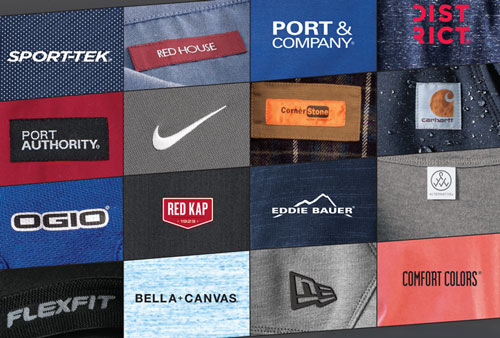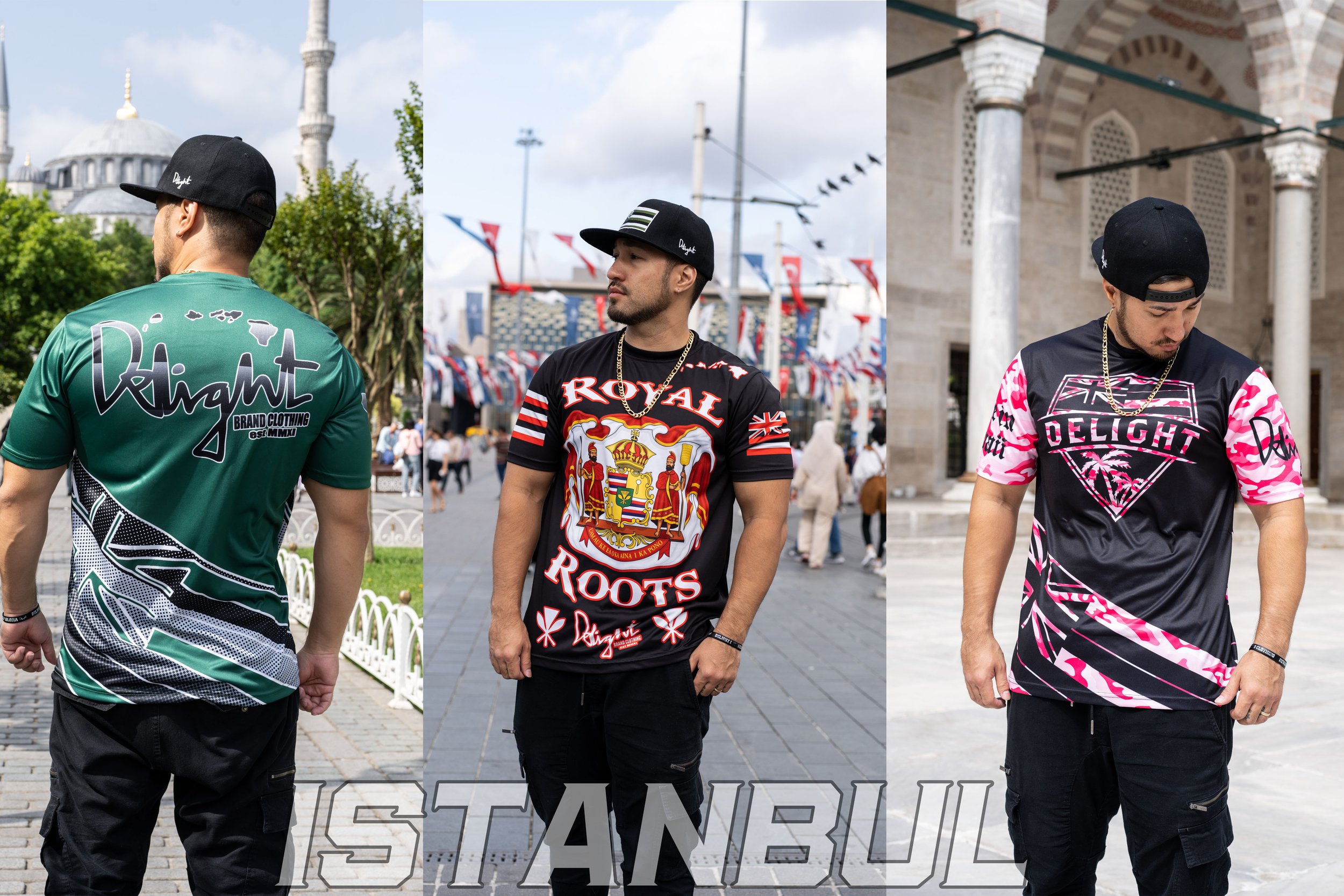Why Fashion Experts Prefer Specific Fabrics in Branded Clothing Lines
Why Fashion Experts Prefer Specific Fabrics in Branded Clothing Lines
Blog Article
Understanding Clothes: The Significance of Textile Choices in Your Wardrobe
The option of fabric in clothing plays a pivotal duty in both aesthetics and capability. Different materials provide differing degrees of longevity, breathability, and comfort, directly affecting the wearer's experience. Comprehending these nuances can enhance one's closet considerably. Many ignore how these selections can affect not simply personal design, however likewise sustainability. What textile decisions could redefine your closet and straighten it with both style and duty?
The Function of Material in vogue and Capability

Typical Textile Kinds and Their Characteristics
When choosing clothes, comprehending the attributes of common fabric types is important for making informed choices. Cotton, a widely-used all-natural fiber, is recognized for its breathability, gentleness, and flexibility, making it ideal for sportswear and everyday garments. Bed linen, an additional all-natural choice, flaunts excellent moisture-wicking properties and a distinctive appearance, ideal for warm climates.Wool, usually favored for its heat and sturdiness, differs in excellence; merino wool is soft against the skin, while coarser types are utilized for outerwear. Artificial materials like polyester and nylon offer longevity and resistance to creases, making them popular for activewear and travel garments. Lastly, blends, which incorporate synthetic and all-natural fibers, can boost capability while keeping convenience. By acknowledging these fabric features, individuals can select garments that lines up with their lifestyle and visual choices.
Breathability and Comfort: Choosing the Right Fabrics for Various Climates
Choosing the best textiles for numerous climates can considerably improve convenience and general wearability. Breathable materials are crucial in warm climates, as they allow air flow and dampness dissipation. Fabrics such as cotton, linen, and moisture-wicking synthetics successfully draw sweat away from the body, maintaining the user cool and completely dry. On the other hand, in colder environments, thicker fabrics like wool or fleece offer insulation while keeping breathability, guaranteeing warmth without overheating.Additionally, the option of fabric weight plays a crucial role; light-weight materials are more suitable for summer season, whereas larger choices are matched for winter months wear. Recognizing the unique residential properties of each textile makes it possible for individuals to dress properly for differing weather condition problems. Ultimately, choosing breathable and comfy fabrics tailored to particular climates can significantly boost daily convenience and improve the general experience of using clothing.
Sturdiness and Care: How Fabric Impacts Durability of Your Closet
Picking the best products can significantly impact the durability and care requirements of a wardrobe. Fabrics such as cotton and polyester are known for their strength and ease of maintenance, making them perfect for daily wear. In comparison, fragile products like silk and lace require more mindful handling and specialized cleaning methods, which can enhance the time and initiative required for care. Branded Clothing.Durability is also affected by the material's weave and surface; tightly woven textiles tend to stand up to deterioration much better than loosely woven choices. In addition, synthetic blends usually offer enhanced toughness, integrating the most effective qualities of several fibers.Understanding the treatment instructions for every textile is essential, as inappropriate drying or cleaning can bring about early wear. Ultimately, selecting long lasting products can cause a longer-lasting wardrobe, minimizing the regularity of substitutes and adding to a much more lasting style selection
The Impact of Textile on Fit and Silhouette

Lasting Fabric Selections: Making Eco-Friendly Decisions
The influence of textile extends past fit and silhouette to include ecological variables, triggering an expanding interest in lasting textile options. Eco-friendly materials, such as organic cotton, hemp, and Tencel, are obtaining traction amongst consumers who prioritize sustainability in their closets. These products are typically produced with less chemicals and water, decreasing their environmental footprint.Additionally, recycled fabrics, made from post-consumer waste, provide a cutting-edge service to the textile industry's air pollution problem. Brands significantly accept transparency in their sourcing techniques, allowing customers to make enlightened choices about their purchases.Choosing lasting materials not just supports moral techniques yet also urges the apparel industry to adopt even more accountable production methods. As recognition of environmental issues rises, individuals are advised to show on the long-lasting influence of their textile selections, cultivating a movement towards an extra environmentally mindful and sustainable strategy to style.
Raising Style: Just How Material Can Transform an Outfit
While lots of may focus on shade and cut when selecting an attire, the option of material plays an important duty in boosting style and boosting total appearance. Various products convey distinctive moods and messages; for instance, silk exhibits high-end and elegance, while denim uses an informal, loosened up vibe. The appearance and drape of a fabric can dramatically change the silhouette, with organized materials providing a polished look and softer ones producing an extra fluid, kicked back aesthetic.Moreover, the weight of the textile influences wearability across periods. Lightweight materials like bed linen and cotton are ideal for summer, while heavier materials such as wool and velour offer heat and elegance in colder months. Comprehending material buildings, such as breathability and stretch, additionally encourages people to make informed options that boost comfort without compromising style. Eventually, the best fabric can change a clothing from normal to phenomenal, making it a crucial factor try this website to consider in any wardrobe.
Regularly Asked Questions
Exactly how Do I Determine the Material Material of My Clothes?
To recognize fabric important site content, one can take a look at treatment tags, conduct melt tests for fiber identification, or seek advice from material examples. These techniques help differentiate materials, making certain notified selections for clothes care and upkeep in daily wear.
Can Material Choice Affect My State Of Mind or Confidence?
Textile selection can substantially impact an individual's mood and self-confidence. Branded Clothing. Particular products might evoke sensations of comfort or style, while others can really feel unflattering or restrictive, eventually affecting self-perception and emotional well-being throughout the day
What Fabrics Are Best for Delicate Skin?
For individuals with sensitive skin, natural fabrics like bamboo, linen, and cotton are frequently suggested. These products are breathable, hypoallergenic, and much less likely to create inflammation, making them suitable selections for comfort and skin wellness.
Exactly how Do I Appropriately Clean and Take Care Of Different Fabrics?
To properly wash and care for different fabrics, one have to think about each material's details needs, consisting of temperature settings, detergents, and drying approaches, guaranteeing long life and keeping the textile's original high qualities for excellent use.
Are There Particular Fabrics for Athletic or Efficiency Wear?
Sports or performance wear commonly uses fabrics such as polyester, spandex, and nylon. These products are developed for moisture-wicking, breathability, and flexibility, enhancing movement and comfort throughout physical tasks while supplying sturdiness and assistance. Conversely, in cooler climates, thicker textiles like woollen or fleece provide insulation while preserving breathability, making sure warmth without overheating.Additionally, the choice of textile weight plays an important duty; lightweight materials are preferable for summertime, whereas larger alternatives are fit for winter season wear. In comparison, fragile products like silk and lace require even more mindful handling and specialized cleansing techniques, which can enhance the time and initiative needed for care.Durability is likewise affected by the textile's weave and surface; tightly woven materials have a tendency to stand up to wear and tear far better than freely woven alternatives. In contrast, stiff fabrics can limit motion yet supply a traditional, refined look.Moreover, the density and appearance of the textile can influence the aesthetic perception of body form. The influence of fabric prolongs past fit and silhouette to include ecological variables, triggering an expanding interest in sustainable material choices. The appearance and drape of a fabric can considerably modify the shape, with organized fabrics offering a polished look and softer ones producing a browse around this web-site much more fluid, loosened up aesthetic.Moreover, the weight of the material affects wearability throughout seasons.
Report this page